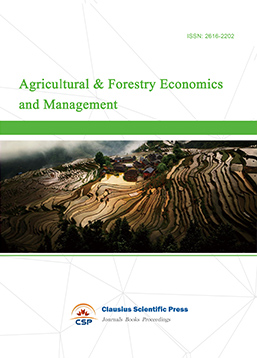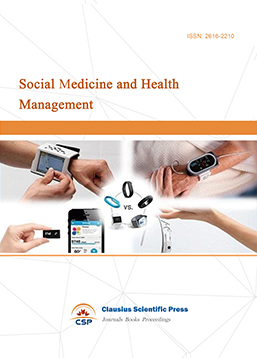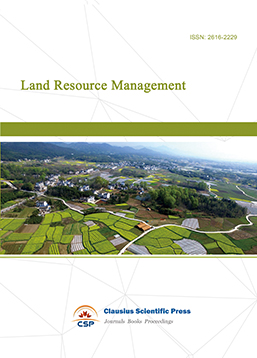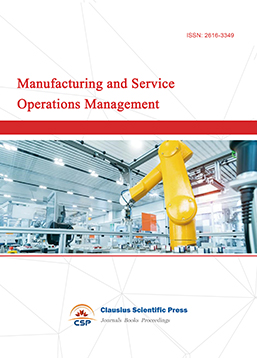Application of Engineering Economic Analysis Model in the Evaluation of the Development of Paper Industry
DOI: 10.23977/ieim.2023.060108 | Downloads: 11 | Views: 1086
Author(s)
Changsheng Xu 1, Lei Xu 2
Affiliation(s)
1 "Shengshi Fengyuan" Develop Science and Technology (Shenzhen) Ltd, Shenzhen, Guangdong, 518000, People's Republic of China
2 "Shang Jingqing" Environmental Technology Co, Zhuhai, Guangdong, 519000, People's Republic of China
Corresponding Author
Changsheng XuABSTRACT
As a traditional industry in China, the paper industry has a great influence on the global paper supply. The evaluation of the development of the paper industry will help to provide guidance for the future development of the industry. In this paper, the development of paper industry is evaluated and analyzed by engineering economic analysis model, including parametric method and non-parametric method. Through the statistical analysis of the input and output of the paper industry in different years by DEA model, it is concluded that the production efficiency of China's paper industry has significantly improved under the positive impact of the improvement of labor quality, scientific and technological progress, improvement of management level and expansion of production scale. Through the calculation and analysis of Cobb-Douglas production function, it is concluded that capital input and scientific and technological progress make a great contribution to the output of the paper industry, but the proportion of scientific and technological progress still needs to be improved. These studies provide good ideas for the future development of the paper industry.
KEYWORDS
Paper industry, Engineering economic analysis model, DEA model, Cobb-Douglas production functionCITE THIS PAPER
Changsheng Xu, Lei Xu, Application of Engineering Economic Analysis Model in the Evaluation of the Development of Paper Industry. Industrial Engineering and Innovation Management (2023) Vol. 6: 54-61. DOI: http://dx.doi.org/10.23977/ieim.2023.060108.
REFERENCES
[1] Tom L, Han Y, Xie Y. Sustainability and energy efficiency improvement of pulp and paper industry China Paper, 2015 (7): 92-98.
[2] Zhang X B, Huang L J. The basic situation and development strategy of China's paper industry China Paper, 2017, 36 (6): 74-76.
[3] Miao Y P. Observation: Analysis of the current situation and development prediction of the paper industry China Paper, 2017 (1): 25-27.
[4] Zhao Wei. Analysis of production and sales of China's paper industry in 2008 Paper Information, 2009, 030 (023): 6-13.
[5] Chang Y, Wang Y. Analysis of building embodied energy and atmosphere impacts in China based on economic input-output life-cycle assessment model. China Civil Engineering Journal, 2011, 44 (5): 136-143.
[6] Zhang Y, Hospital X C. Analysis of the Statistic Model of Corporate Earnings under the Economic Downturn Risks. Engineering Economy, 2015, 018 (07): 92-96.
[7] Shi G M, Bi J, Wang J N. Chinese regional industrial energy efficiency evaluation based on a DEA model of fixing non-energy inputs. Energy Policy, 2010, 38 (10): 6172-6179.
[8] Wang Y M, Chin K S. A neutral DEA model for cross-efficiency evaluation and its extension. Expert Systems with Applications, 2010, 37 (5): 3666-3675.
[9] Jie W U, Liang L. A DEA model for identifying critical input-output performance measures. Journal of Systems ence & Complexity, 2012, 25 (002): 275-286.
[10] Wei T. Impact of energy efficiency gains on output and energy use with Cobb–Douglas production function. Energy Policy, 2007, 35 (4): 2023-2030.
[11] Morimoto H, Zhou X Y. Optimal Consumption in a Growth Model with the Cobb–Douglas Production Function (ENG). Siam Journal on Control & Optimization, 2008, 47 (6): 2991-3006.
[12] Budiraharjosunarnosolikhin K. Cobb-douglas production function for analyzing dairy milk production factors. Ecology, Environment and Conservation, 2020, 26 (1): 384-389.
| Downloads: | 27006 |
|---|---|
| Visits: | 812720 |
Sponsors, Associates, and Links
-
Information Systems and Economics

-
Accounting, Auditing and Finance

-
Tourism Management and Technology Economy

-
Journal of Computational and Financial Econometrics

-
Financial Engineering and Risk Management

-
Accounting and Corporate Management

-
Social Security and Administration Management

-
Population, Resources & Environmental Economics

-
Statistics & Quantitative Economics

-
Agricultural & Forestry Economics and Management

-
Social Medicine and Health Management

-
Land Resource Management

-
Information, Library and Archival Science

-
Journal of Human Resource Development

-
Manufacturing and Service Operations Management

-
Operational Research and Cybernetics


 Download as PDF
Download as PDF